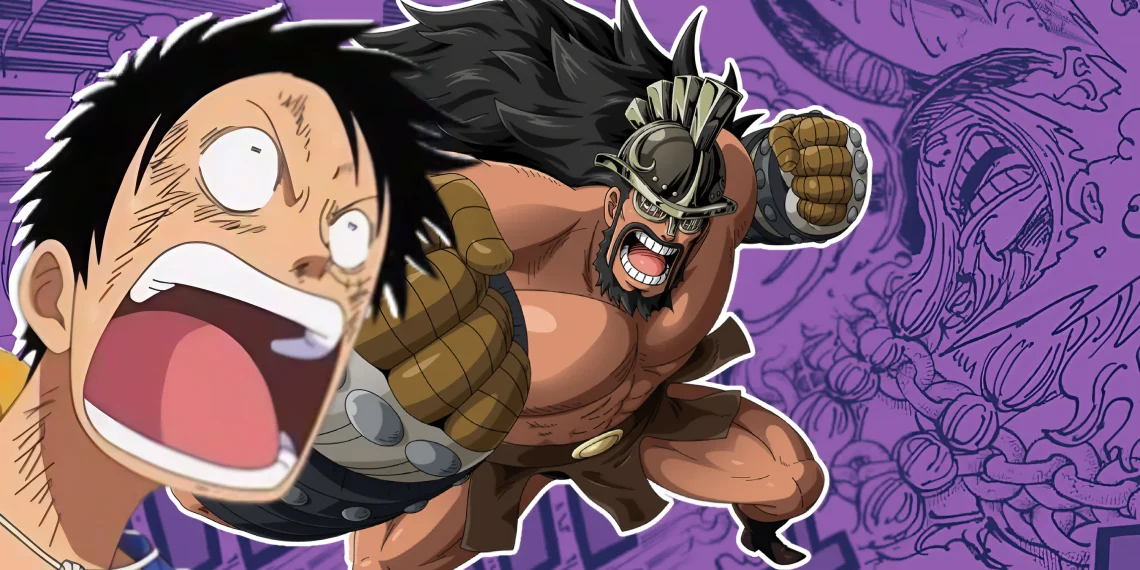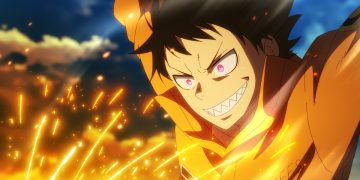In the latest development of the beloved series One Piece, chapter 1131, which released on November 11, 2024, sheds light on a long-speculated storyline involving Loki, the Prince of Elbaf.
This chapter doesn’t just hint at Loki’s early days; it provides unexpected insights into the unique, possibly harsh environment he grew up in.
Rather than being raised within the protective and opulent walls of Elbaf’s royal palace, Loki spent his formative years in the dangerous warland, an area rife with creatures who might be seen as threats or even outright monsters.
This revelation invites fans to consider that there may be more complexity behind his story and that his backstory may be more connected with another familiar character Hajrudin.
At first glance, this connection between Loki and Hajrudin is not immediately clear.
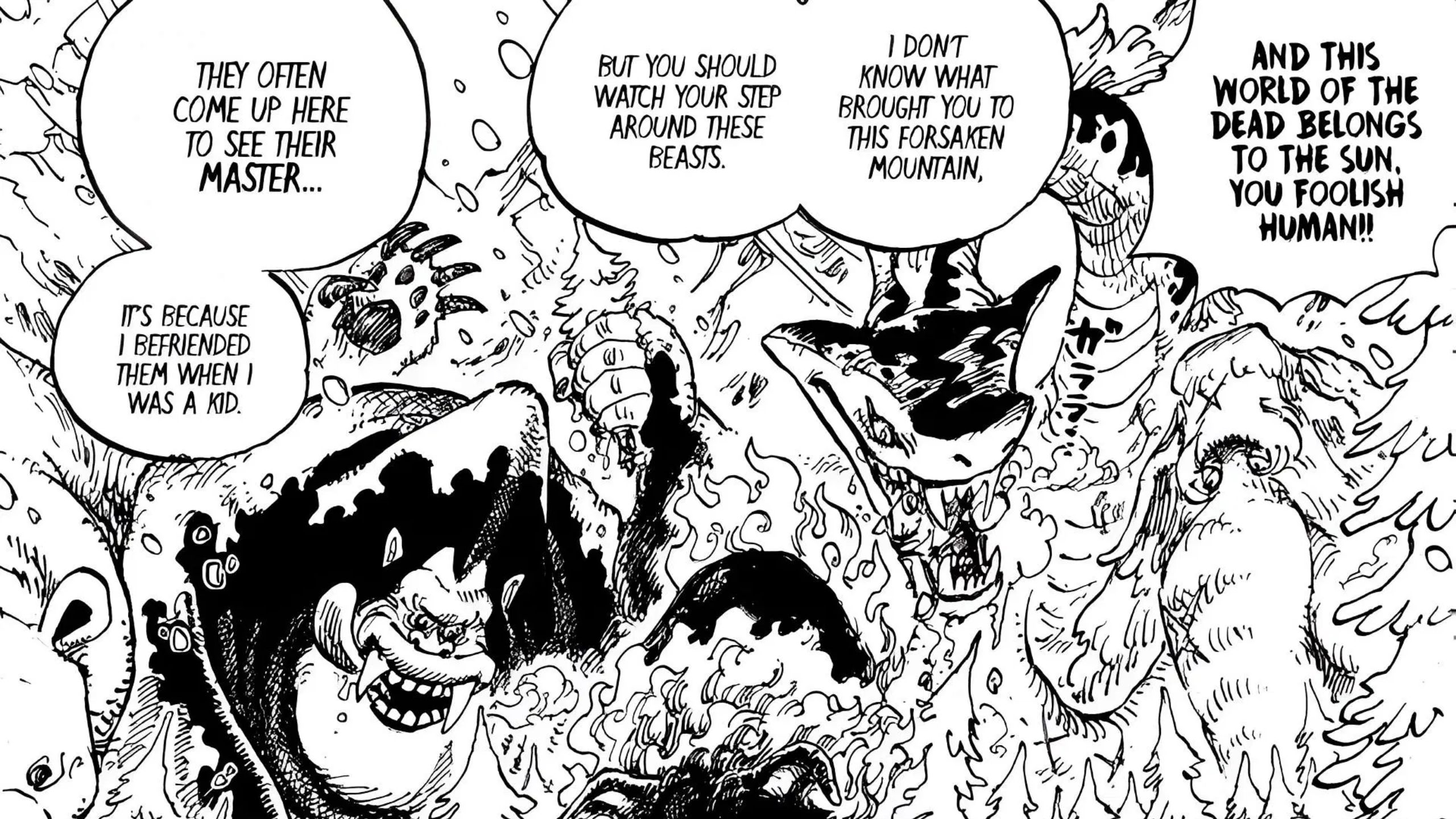
Both have significant roles in the One Piece world, but chapter 1131 subtly introduces clues that could change our understanding of these two characters, their lineage, and even their rivalry.
This exploration of Loki’s life, especially in comparison with Hajrudin’s, introduces a potential hierarchy within the Elbaf royal family and suggests that the ties between Loki and Hajrudin are far from straightforward.
As fans of the series know, Elbaf is often portrayed as a realm of giants with powerful legacies, but the complexities hinted at within chapter 1131 suggest that the line of succession and familial roles might not be as straightforward as once believed.
Loki and the Warland: Clues About His Childhood
In One Piece chapter 1131, Loki’s character was brought to life in a new way, revealing a personality that is deeply affected by a turbulent and perhaps traumatic past.
When Monkey D. Luffy refused to comply with Loki’s commands, Loki’s reaction was far from rational or restrained; he erupted in anger, calling upon monstrous allies from the warland.
Loki’s reaction went beyond the response of a typical prince, revealing an inner turmoil and desperation that likely stem from his upbringing in a less-than-royal environment.
These creatures, described as the “monsters of the warland,” seemed to hold a unique fondness for Loki a surprising twist that suggests a mutual bond.
The backstory presented here shows that Loki spent his childhood immersed in the challenging and treacherous environment of the warland rather than being nurtured within the royal palace.
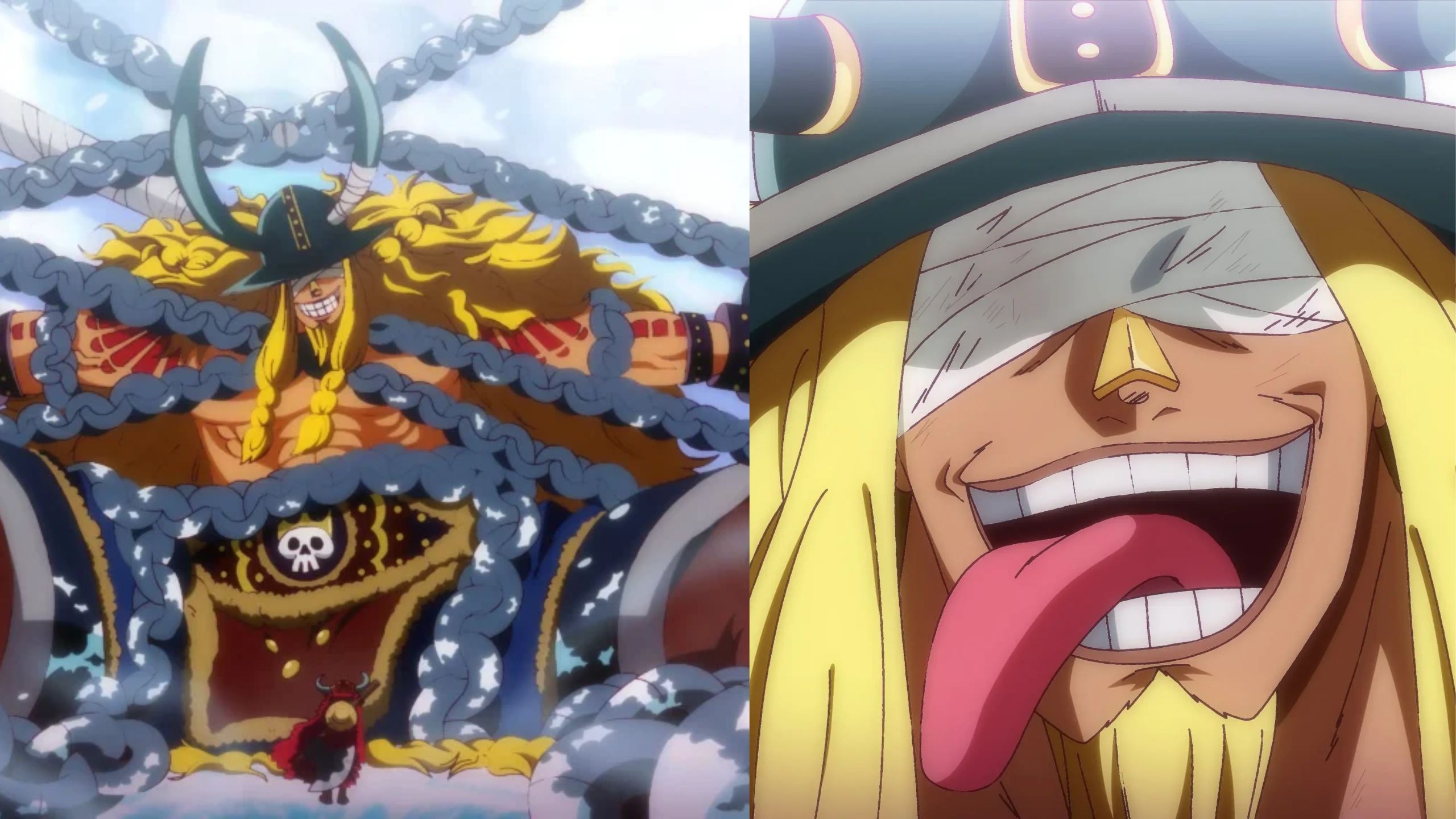
While he could have grown up in privilege and wealth, enjoying the advantages of royal life, Loki instead found himself among the wild, fearsome inhabitants of the warland, an area known for its hostility.
This aspect of Loki’s past prompts fans to wonder: why would a royal child be left in such a hostile place? It seems unlikely that King Harald, as a father and a king, would cast aside his son without significant reason.
However, given the fact that Loki has been labeled as the “accursed prince,” it becomes plausible that his abandonment might have been intentional.
Perhaps there was a prophecy, an omen, or a unique characteristic Loki possessed that made him unfavorable in the eyes of King Harald.
As the so-called “accursed prince,” Loki may have been regarded as a threat or even a bad omen for the kingdom, which could explain why he was relegated to the warland instead of enjoying the privileges of his heritage.
Hajrudin’s Role and His Unique Status Within the Royal Family
This brings us to the character of Hajrudin, who, like Loki, is revealed in chapter 1131 to be a son of King Harald. However, Hajrudin’s lineage is presented with intriguing distinctions.
While he is acknowledged as King Harald’s son, he is never once referred to with the title of “prince.”
This omission might seem minor, but in the grand world of One Piece, such details are rarely accidental.
For a son of a king not to receive the title of prince suggests a unique situation within the royal family, hinting at a different status or perhaps even a different relationship to the throne itself.
Hajrudin’s lack of a princely title raises several possibilities. First, it could indicate that he is not in line for the throne.
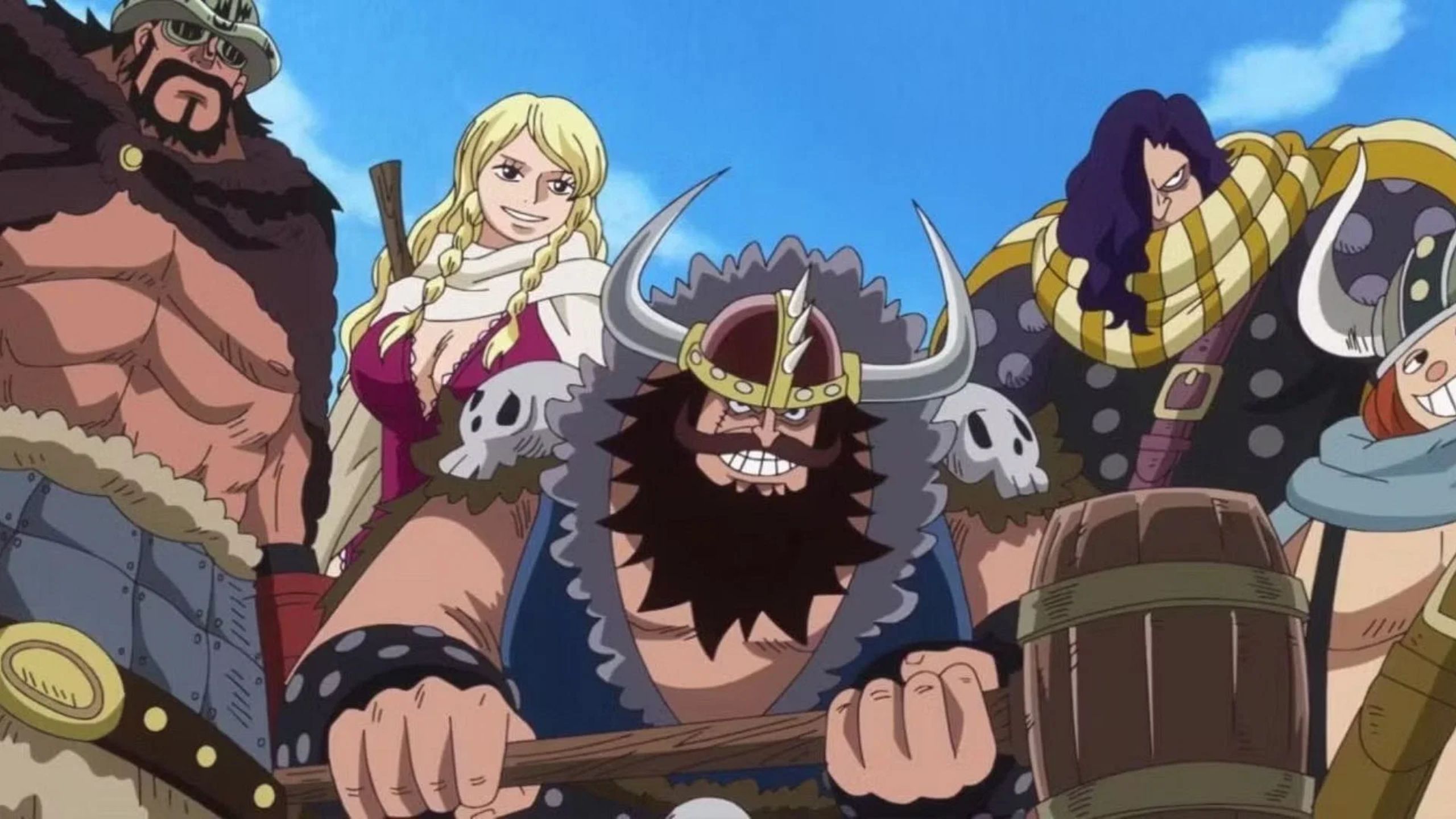
Despite his royal blood, Hajrudin may not be considered a legitimate heir. This exclusion might have a historical basis, rooted in Elbaf’s royal customs or family dynamics.
Another theory proposes that Hajrudin might not be a legitimate son in the traditional sense, making him ineligible for a princely title.
The fact that Hajrudin was not raised or presented as a prince, despite his blood ties to the king, suggests that the Elbaf royal family could have a complicated, perhaps even strained, relationship with Hajrudin.
Further, while Hajrudin is part of the Straw Hat Grand Fleet and a formidable warrior in his own right, his identity and pride as a warrior seem to be rooted more in his own abilities than in any royal title.
In fact, his story hints at an upbringing filled with struggle, combat, and perseverance, which seems to seperate from the typical upbringing one would expect for a prince.
This difference further implies that the Elbaf royal family has unique internal dynamics, where lineage and legitimacy may not be enough to secure a title or a place within the palace.
Theory of the “Accursed Prince” and the Concept of Multiple Marriages in Royal Succession
The notion of the “accursed prince” becomes central to understanding Loki’s childhood, as it suggests that he was branded in a way that set him apart from other royal offspring.
In many fictional and historical narratives, rulers often face difficult decisions regarding their heirs, especially when there are omens or negative perceptions associated with them.
The concept of a cursed child, particularly in the context of royalty, often implies that the child is seen as a harbinger of misfortune or a potential danger to the kingdom.
In the case of Elbaf’s royal family, it seems plausible that King Harald might have sought a way to ensure the kingdom’s safety by distancing himself from Loki.
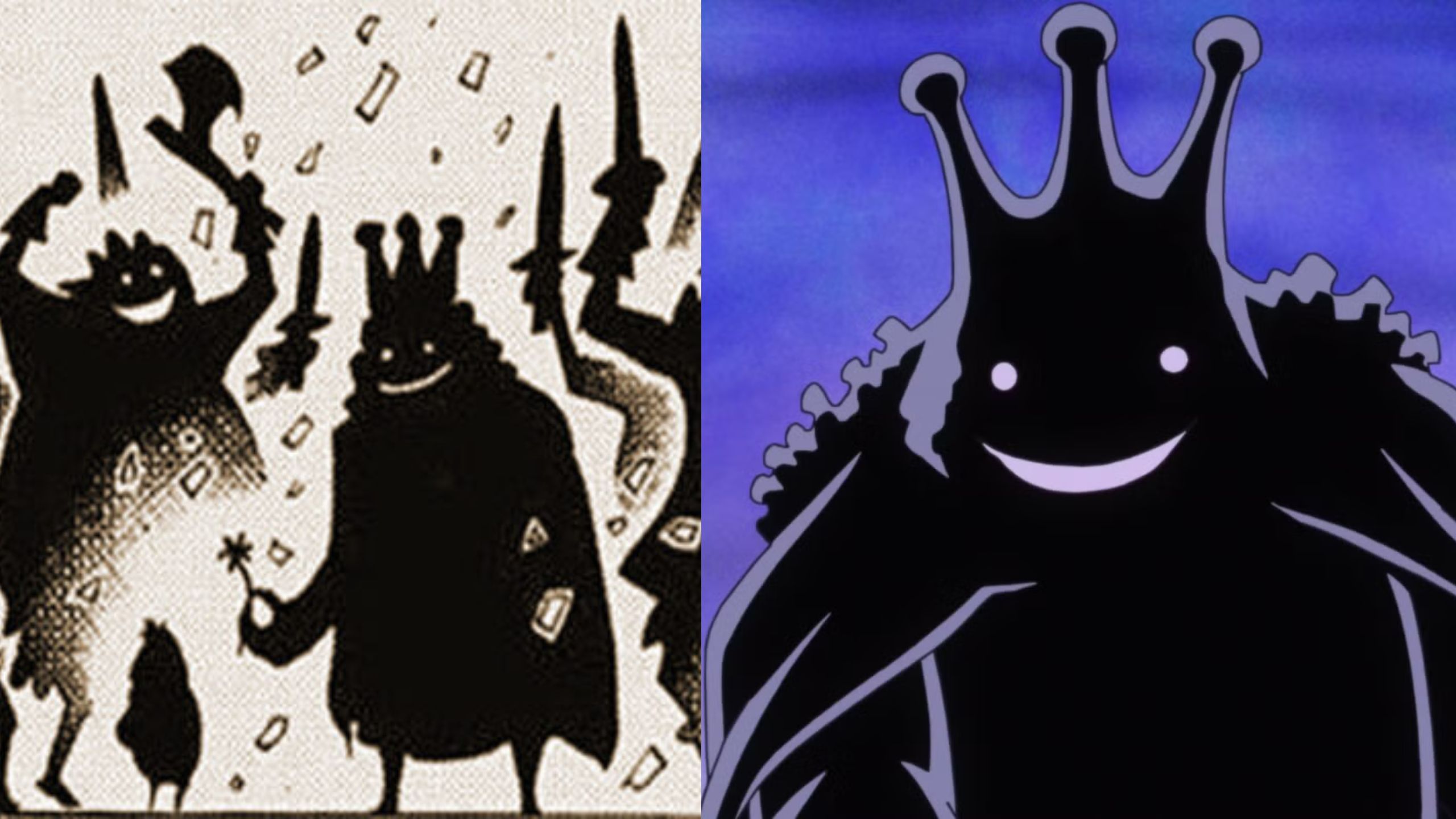
The decision to leave him in the warland might have been a calculated move, intended to allow Loki to prove himself or to prevent him from being a disruptive force within the palace.
Although it seems harsh, such decisions are not unheard of, particularly in fictional depictions of royalty.
King Harald’s decision to remarry could also fit into this theory, as he may have wanted to secure an heir that the kingdom would more readily accept.
With Loki viewed as an accursed prince, King Harald’s marriage to another queen could have been a political move to bring a new heir into the royal line, one without the stigma attached to Loki.
This new marriage would have brought about Hajrudin, Loki’s stepbrother, who, despite his lineage, was also not fully accepted as a prince.
This theory of multiple marriages serves to highlight the challenging nature of succession in Elbaf’s royal family.
By remarrying, King Harald would have attempted to strengthen his legacy and ensure a smooth succession. However, as we see, neither Loki nor Hajrudin fully embodies the ideal prince.
Loki is cursed, while Hajrudin lacks the title. This arrangement might lead to a rivalry fueled by resentment and a desire for recognition two brothers with shared blood but vastly different paths.
Hajrudin’s Unique Journey and Why He Has Not Claimed the Title of Prince
Hajrudin’s story, as presented in chapter 1131, offers further insight into the nature of Elbaf’s royal hierarchy.
Although he is King Harald’s son, Hajrudin appears to have been raised apart from the palace, possibly treated as an outsider despite his lineage.
He is a warrior, an adventurer, and a part of the Straw Hat Grand Fleet, which suggests that his life’s purpose lies outside the walls of the royal palace.
This dividing from a princely upbringing might have fostered in Hajrudin a sense of independence, leading him to define his identity based on his actions rather than his birthright.

It is also worth noting that in One Piece and many other stories, princes and royal heirs often feel an obligation to prove themselves, to demonstrate that they are worthy of their titles.
Yet, Hajrudin does not seem to pursue this goal. His accomplishments are achieved through his efforts and alliances, not through his royal connections.
This choice may be both personal and practical; Hajrudin’s identity as a warrior aligns with the values of the giants, who respect strength, courage, and loyalty above birthright.
This aspect of Hajrudin’s character raises the question of why he has not sought the title of prince, despite having the bloodline to do so.
One possible answer is that he simply doesn’t see value in it. Having been raised as a warrior, Hajrudin may perceive his identity as a prince as irrelevant, especially since he has forged a place for himself in the one piece world through his strength and loyalty to the Straw Hats.
Alternatively, he may recognize that claiming the title could bring him into direct conflict with Loki, a battle he may prefer to avoid.
The Imminent Clash: Stepsibling Rivalry and the Struggle for Elbaf’s Throne
With the complex relationships between Loki, Hajrudin, and King Harald coming into focus, it appears that Elbaf’s royal family is on the brink of conflict.
Loki’s fury and resentment, stemming from his abandonment, could lead him to seek vengeance, both against his father and his stepbrother.
There is speculation among fans that Loki may have harbored a deep-seated grudge against King Harald, not only for abandoning him but also for potentially usurping his rightful place on the throne by marrying another woman and fathering Hajrudin.
In a potential clash for the throne, the stakes for Loki and Hajrudin are immensely personal.
Both have grown up under the shadow of the royal palace without truly being part of it, and both have felt the sting of exclusion in different ways.
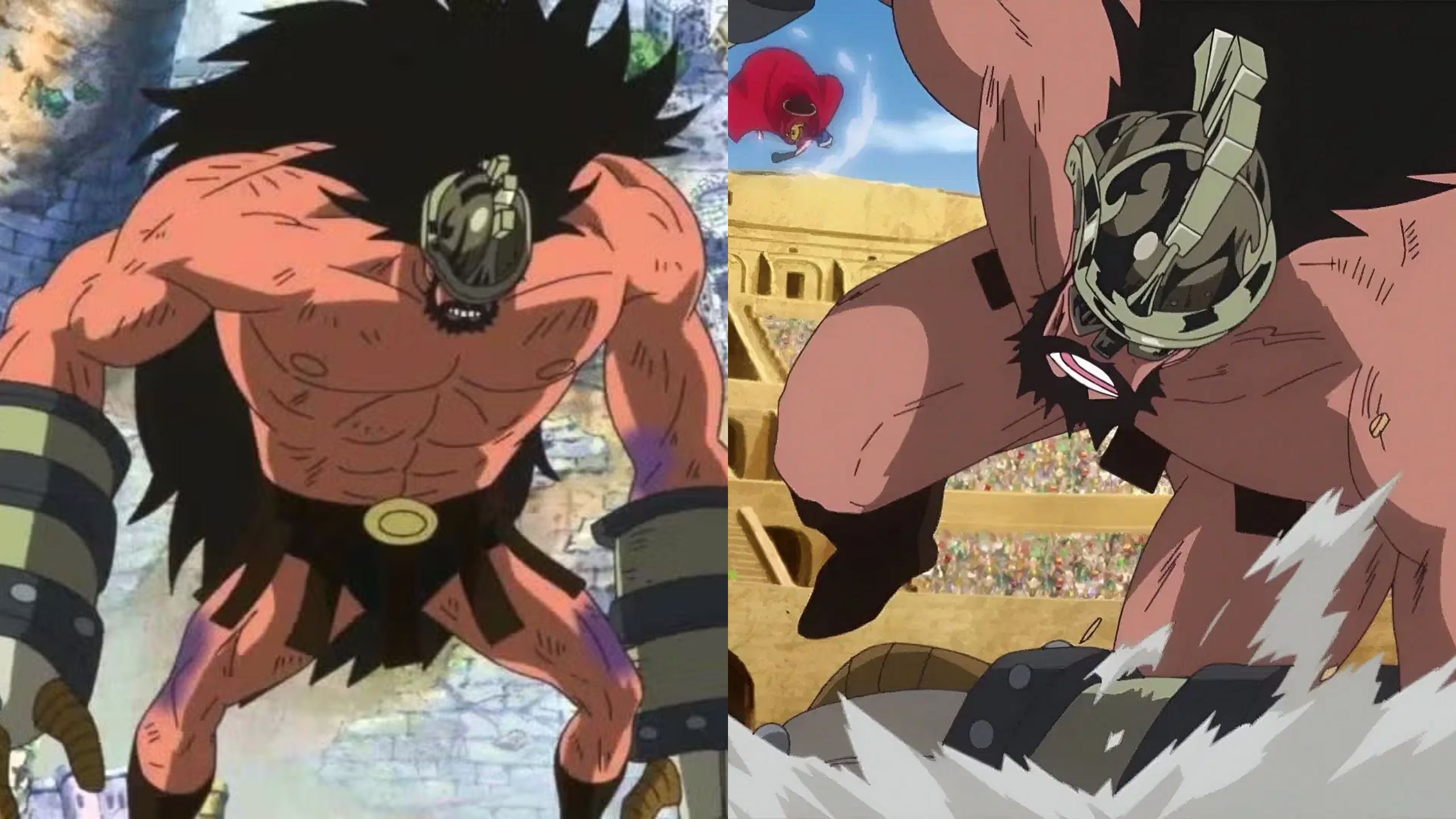
For Loki, claiming the throne could be a way to validate his existence and defy the curse that once labeled him as an outcast.
For Hajrudin, stepping up might be a reluctant choice driven by a desire to protect Elbaf or to prove that he, too, has a legitimate claim.
This clash of stepsiblings could be the ultimate test of their contrasting upbringings and philosophies. Loki, who has spent his life amidst the monsters of the warland, may bring a ruthless and rebellious spirit to the fight.
In contrast, Hajrudin, a seasoned warrior and member of the Straw Hat Grand Fleet, might approach the battle with a sense of honor and restraint, embodying the values he has come to cherish.
The Bigger Picture: The Impact of Royal Conflict on Elbaf and Beyond
Should this rivalry for the throne come to fruition, it is likely to have significant consequences for Elbaf and possibly the wider world of One Piece.
Elbaf is home to a proud and powerful people, and a divided royal family could destabilize the kingdom, weakening its standing among the giants and making it vulnerable to external threats.
With Loki and Hajrudin pitted against each other, Elbaf might face a civil war, dividing its people into factions loyal to each potential ruler.
Moreover, Elbaf’s giants have long been a formidable force in the One Piece universe.

If Loki and Hajrudin’s conflict were to spill beyond the borders of Elbaf, it could draw in other factions, including the Straw Hats, who count Hajrudin as one of their allies.
This could lead to alliances, betrayals, and battles that reach far beyond Elbaf, potentially affecting the balance of power in the One Piece world.
Chapter 1131 has revealed an unexpected depth to Loki and Hajrudin’s backstories, presenting them as complex characters shaped by their unique challenges and rivalries.
Their intertwined fates promise to introduce new conflicts, deepen the lore of Elbaf, and perhaps alter the course of One Piece’s storyline in significant ways.
As fans eagerly await the next chapter, the question remains: will Elbaf’s throne unite or tear apart its royal family? The answer may be as unpredictable and thrilling as One Piece itself.


